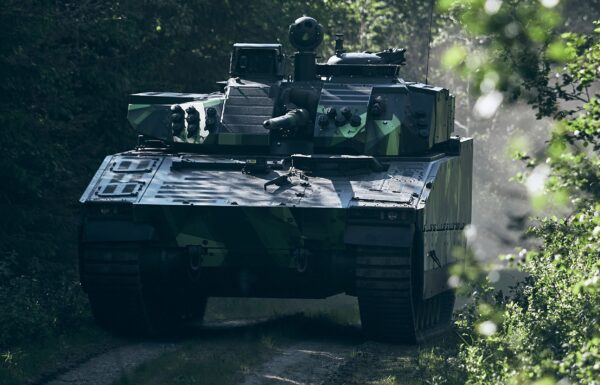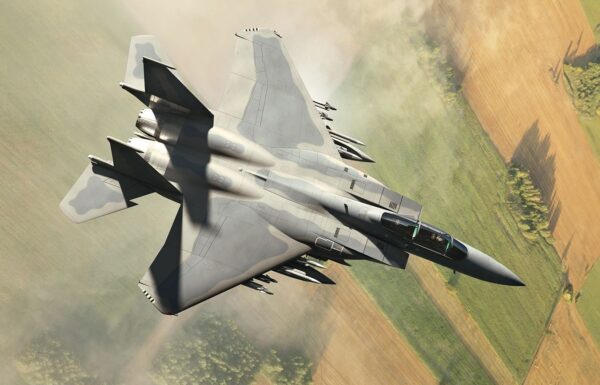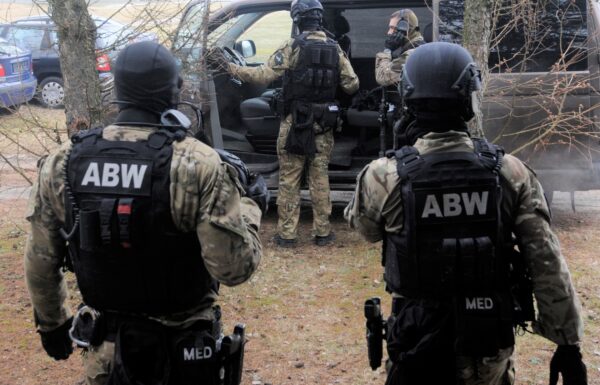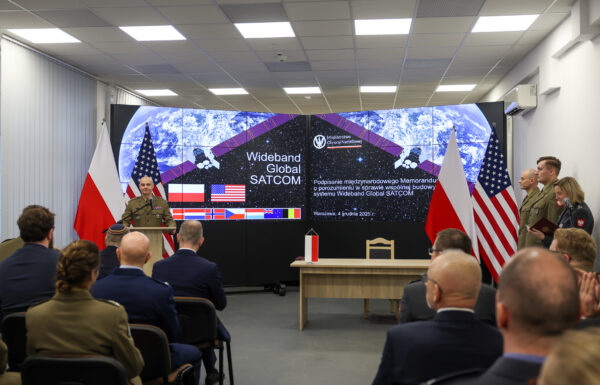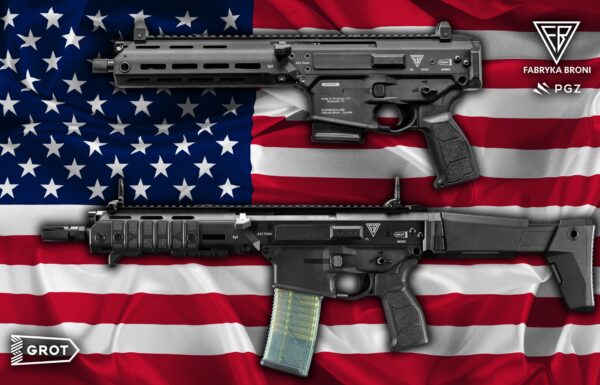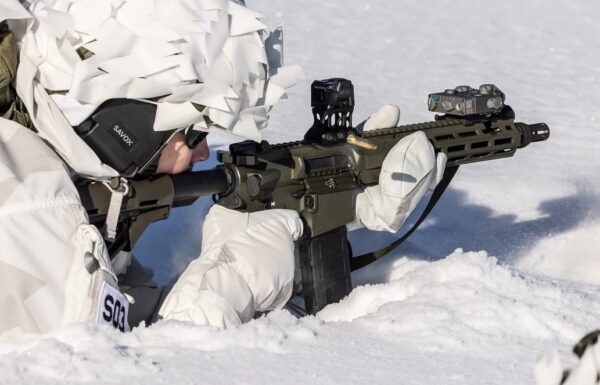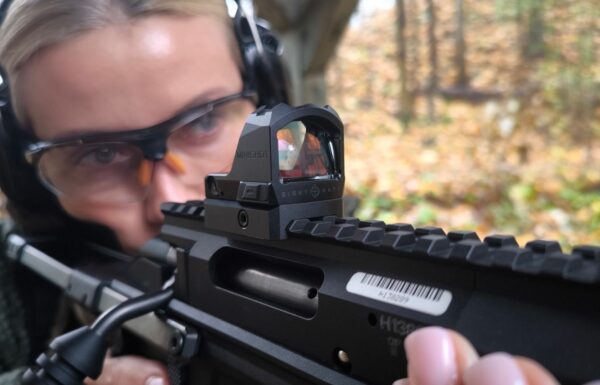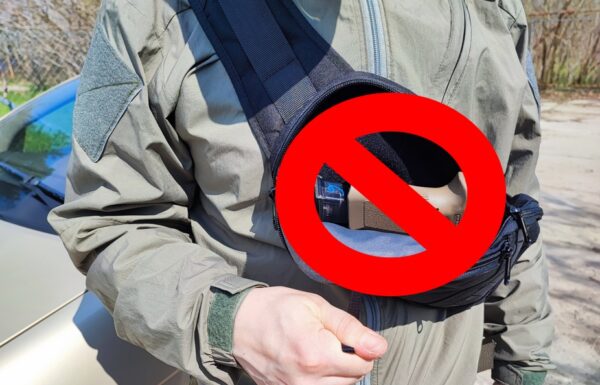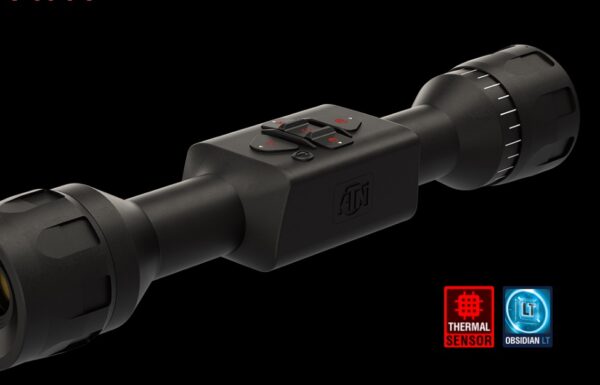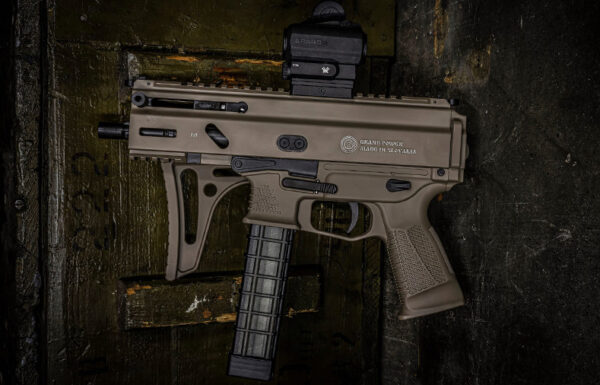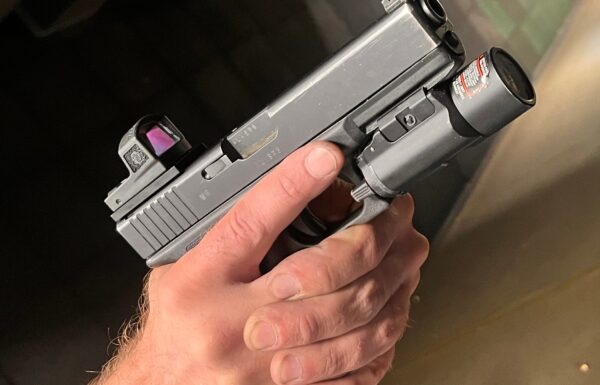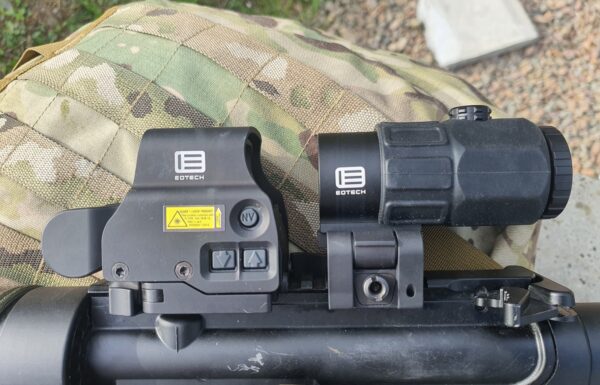Controls
For me, the most important factor when choosing a pistol flashlight is the switch. Its design, construction, and quality determine whether the flashlight can be used comfortably, quickly, and reliably during shooting. The Inforce WILD1 positions itself somewhere in the upper-middle tier of the flashlight market, staying within the group where the primary feature is a constant-on switch. The buttons are large and do not protrude beyond the weapon’s outline. Operation is comfortable even while wearing gloves, which is by no means a given with flashlights from other manufacturers. The ambidextrous switch works identically on both sides. The travel is short, and activating the light requires deliberate pressure, reducing the risk of accidental activation.
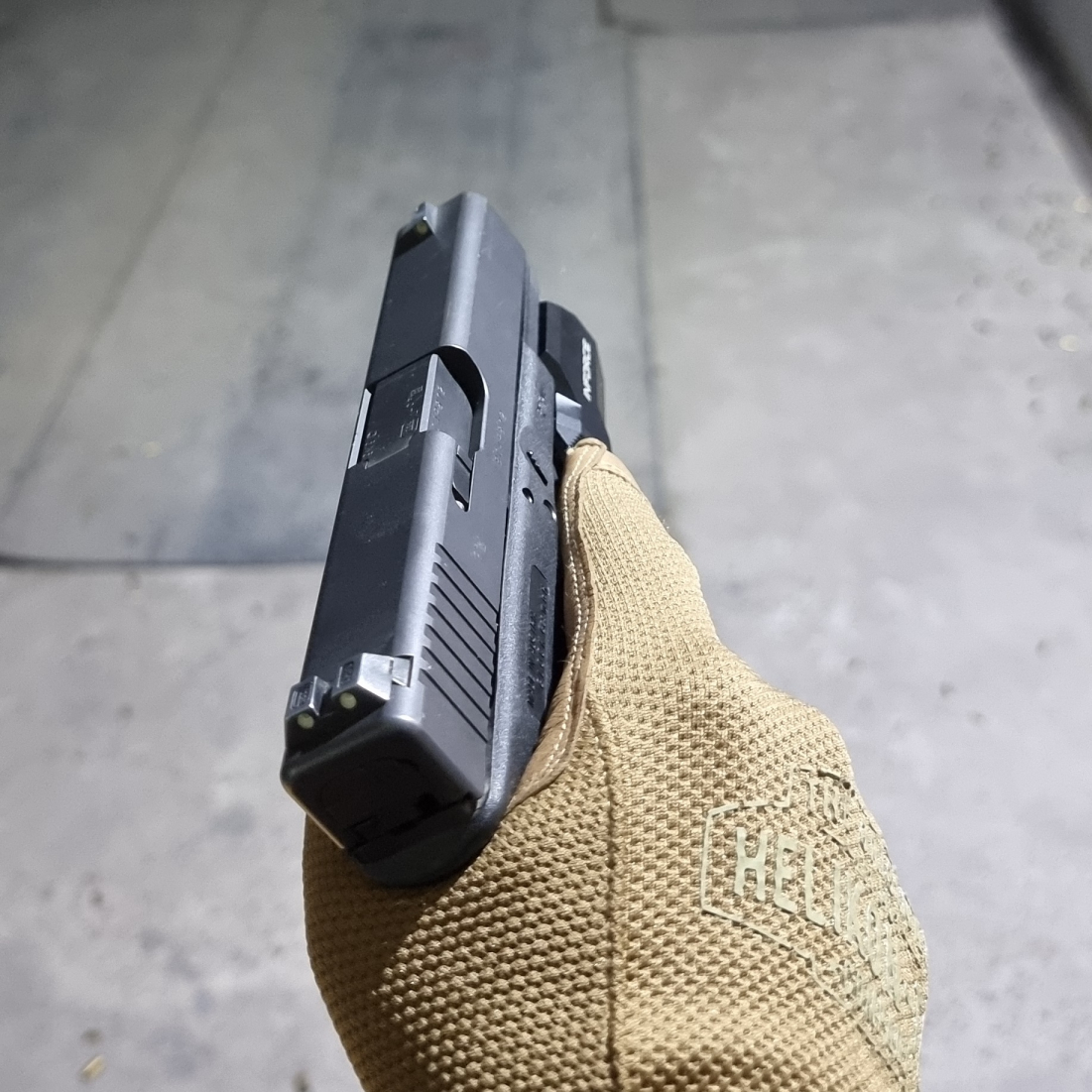
The distinct click lets you feel the moment the flashlight is supposed to turn on. However, it doesn’t always activate with very quick or overly light presses. This isn’t the flashlight’s fault. Operating any weapon light takes practice, and with the Inforce, proper activation requires a bit of decisiveness, regardless of whether you hear the click. This minor issue stopped bothering me after just one intense training session. The pressure on the switch is almost perpendicular to the frame. Still, in practice, it also works at slightly different angles. It’s worth noting that activating the switch in a strictly perpendicular direction will always affect your aim to some degree. That’s why consistent training is essential when using a weapon light, whether you’re pressing the switch directly toward the frame or at an angle. The switch is solid—in my opinion, even excellent—though the momentary mode could have a slightly quicker activation interval. I find it faster to turn the flashlight on and off with two quick presses than to use the momentary mode. Still, the constant-on mode more than makes up for it—it can be quickly and comfortably activated one-handed, even while wearing gloves. Compared to several well-known brands, with models priced from 500 PLN to top-tier ones over a thousand, the Inforce switch turned out to be the most comfortable solution for me, especially when operating the weapon with one hand.
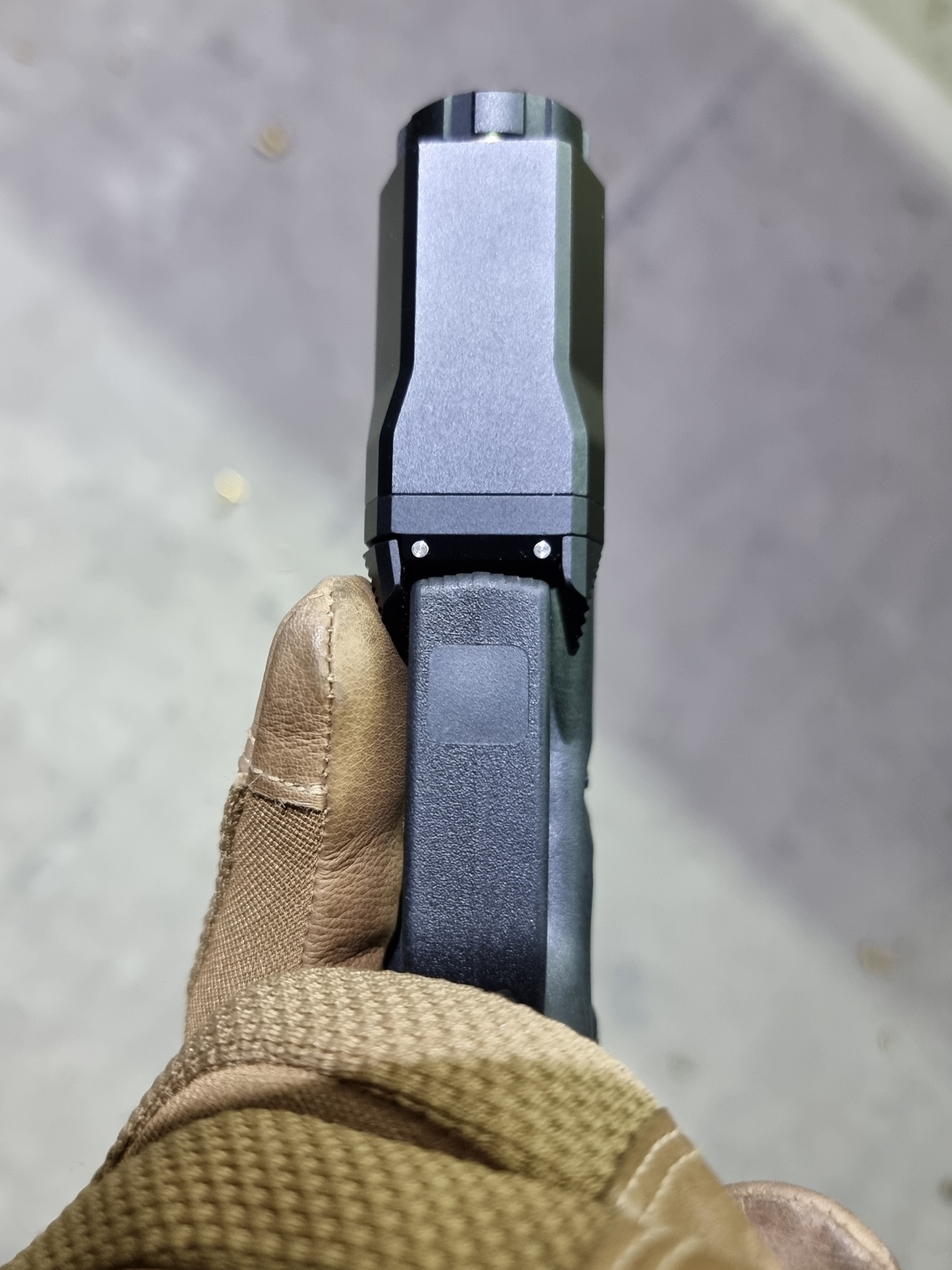
Modes
The manufacturer has provided two modes. For some, that’s a plus, for others, not so much. I belong to the former group. I expect two basic modes from a weapon light, and the Inforce WILD1 delivers. The momentary mode is activated by holding the button for just over half a second; releasing the button turns the light off. It may sound odd, but in practice, it’s simple. However, because of the required half-second minimum press time, this mode doesn’t allow for ultra-brief flashes (so-called “blips”) or high-speed manual strobe effects. I’d prefer the designers shorten this activation time slightly, as seen in some competing models within a similar price range. The second mode is the classic electronic On–Off: the first press turns the flashlight on, the second turns it off. Both modes work reliably, whether using the left or right button. The switch’s design allows for fast activation and deactivation with the index finger—even when holding the weapon one-handed—without forcing the shooter into an unnatural motion of searching for and pushing the button with the trigger finger. Because of that, this mode will often be the better and faster option compared to using the momentary mode.
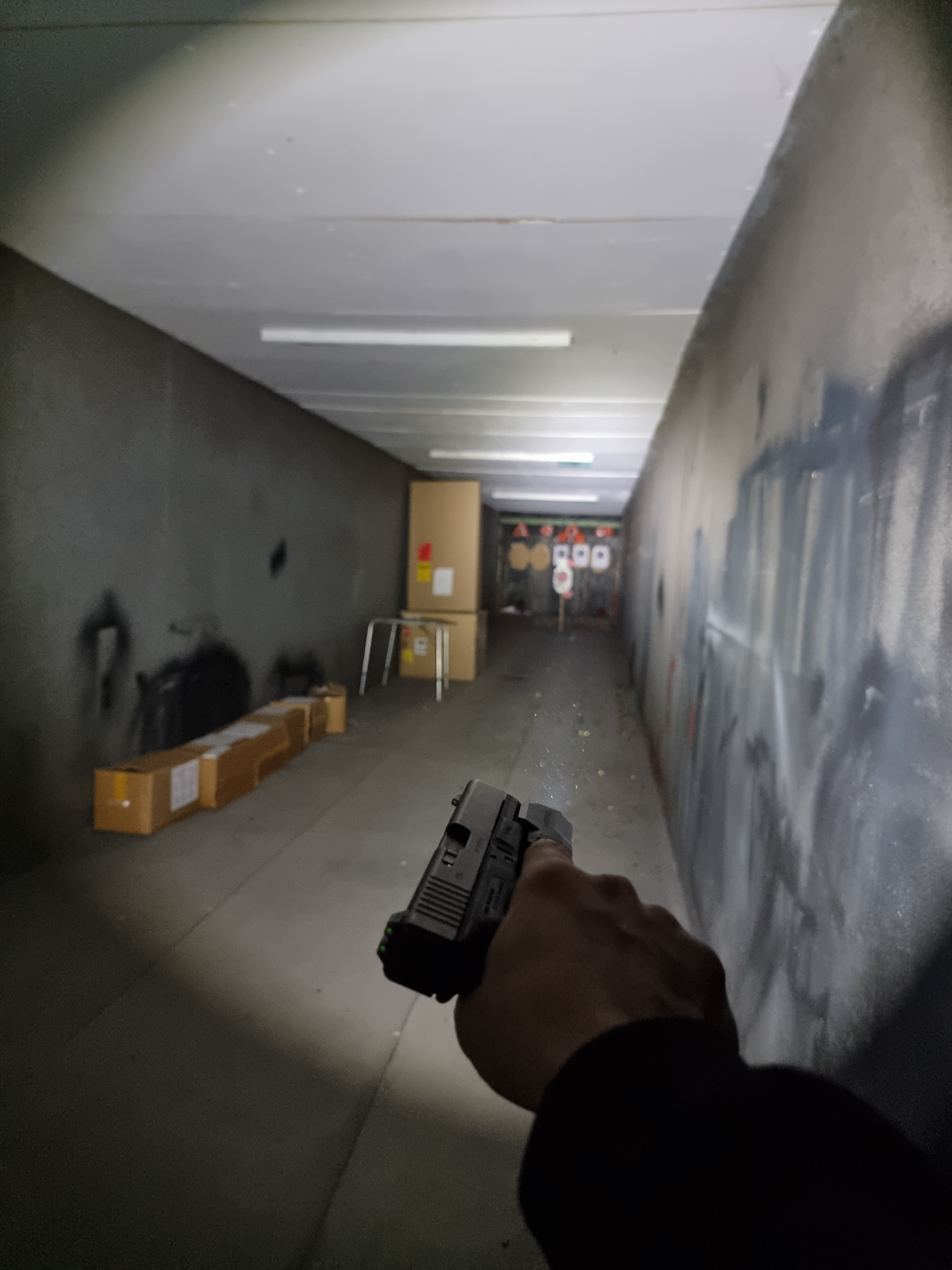
Mounting
Mounting the flashlight is simple. All you need is a flathead screwdriver or a small coin. The flashlight is designed so that nothing sticks out, helping to avoid accidental snagging on clothing or gear. It also fits more easily into narrower holsters. The set includes mounting plates for both Picatinny and universal (Glock) rails, making it a good all-around standard.
Switch lockout
A lockout to prevent accidental activation of the flashlight does exist, although it’s not mentioned in the official manual. In practice, slightly unscrewing the head is enough. It requires enough force that there’s no chance the flashlight will turn on during transport. Fully unscrewing the head gives access to the CR123 battery, so there’s no need to remove the flashlight from the weapon to replace it.

Lux, Luxury, Lumens
The flashlight is powered by a single, commonly used CR123 battery. When discussing batteries, it’s important to acknowledge certain limitations of single-cell power if we want to compare the Inforce’s specs to those of larger flashlights powered by two cells. I’m deliberately not comparing it to other compact, single-cell lights, because the WILD1’s performance puts it much closer to the two-cell category. According to the manufacturer, the specs list 500 lumens, 5,000 candela in the central beam, and up to two hours of runtime. Lumens are one thing, but what really matters are: candela, i.e., the intensity of the beam on the target; lux – light intensity per square meter; and actual sustained runtime at full power. These are the key metrics to focus on when doing an initial search for flashlights on Google. But numbers are just numbers, real-world performance is what counts. A flashlight is something you need to hold in your hand and test—ideally, after watching a few less commercialized reviews on YouTube. That’s especially true given that most flashlights, even expensive ones, don’t consistently deliver on all their promises. According to tests by one foreign flashlight-focused YouTuber, the Inforce WILD1 produces slightly fewer lumens than advertised, around 3,000 candela, and has a quicker drop in overall output compared to two-cell competitors. However, it generally outperforms other single-cell lights. It delivers close to the advertised two-hour runtime, with a gradual and acceptable decline in brightness over time. That said, let’s be honest: many shooters may not even notice battery drain if they only use the flashlight momentarily, say, once every couple of months. Where the Inforce stands out from the competition is in the shape and behavior of its beam. The size of the hot spot, the central beam, is medium, and it transitions rather quickly into a somewhat overly diffused corona. The separation between the hot spot, the corona, and the rest of the spill isn’t as sharp as in some of the top-tier two-cell lights. Still, the difference isn’t something that causes any real discomfort or distraction. On the other hand, the Inforce offers a solid, wide spill and a neutral, functional, and, at least for me, pleasant color.
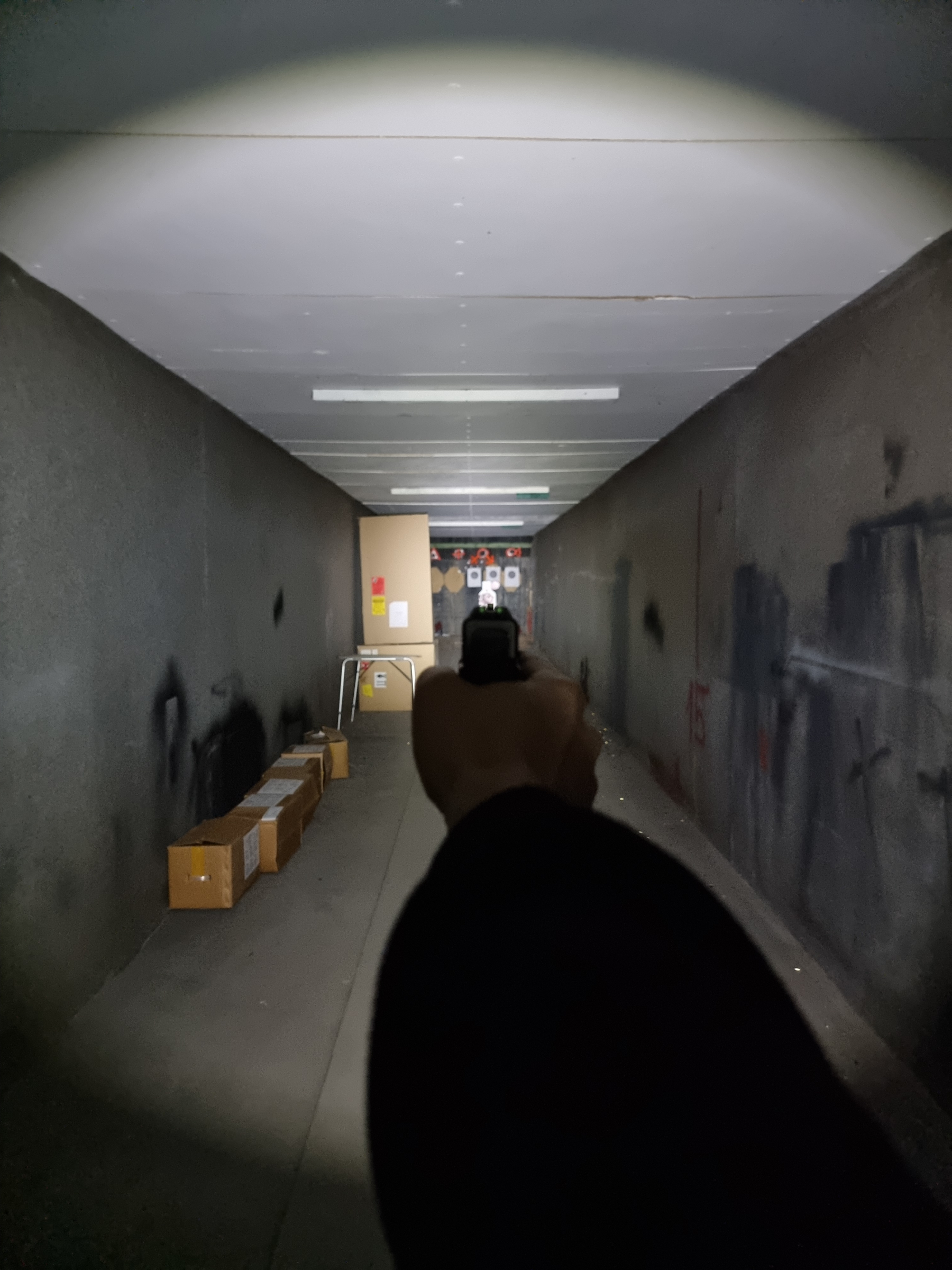
The corona could be a bit less diffused, as it can sometimes be challenging to spot details outside the central beam when shooting beyond 15 meters, but overall, it’s solid. For more demanding use, such as in law enforcement or military settings, where, according to some shooters, the hot spot and its corona should illuminate most of the human figure more clearly and uniformly, I might opt for a different, but definitely larger, flashlight. To my eye, it’s clear that the manufacturer has pushed the limits of what a single battery can deliver, trying to match the performance of top-tier, larger lights. You can’t have everything. If you want a slim, lightweight flashlight, you shouldn’t expect it to perform exactly like bulkier two-cell models. That said, it still outperforms several small models from other brands.
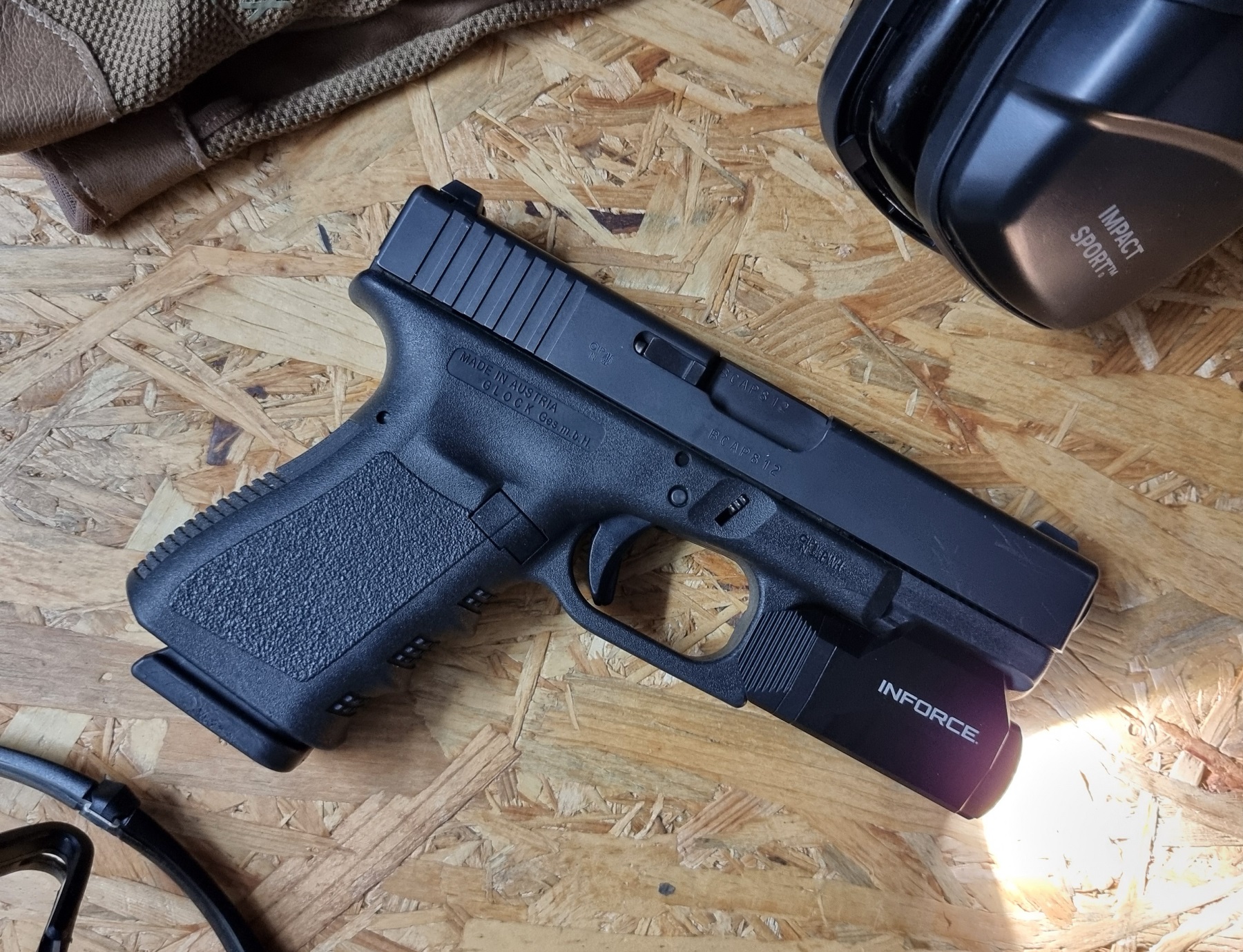
Summary
The flashlight has three minor drawbacks that, while not major, would keep me from choosing it as a duty light for law enforcement or military use. However, these issues are irrelevant for everyday, casual civilian use, such as occasional, hobby shooting at the range. On the other hand, the flashlight offers several advantages that aren’t always found in competing models: a slim design with no protruding elements, comfortable buttons, and a replaceable battery that doesn’t require removing the light from the weapon. I’ve been carrying and using the WILD1 for testing for the past six months. What makes this flashlight stand out most is the switch design, which, in terms of ergonomics, beats many competing solutions that require pushing levers up/down or pressing the switch forward or downward. The Inforce WILD1 is made for shooters who prioritize low weight and a slim, compact profile that doesn’t extend beyond the outline of the pistol. And it does all that while offering large nut non-protruding controls and solid light output. The flashlight is simple, sleek, and, to my eye, stylish. In short, it’s an excellent compact light for comfortable everyday carry.
Special thanks to Hubertus Pro Hunting for providing the Inforce WILD1 pistol flashlight for testing.
Sponsored collaboration. All product tests are conducted independently, and the opinions expressed are solely those of the author. The sponsor has no influence over the content of this review.



